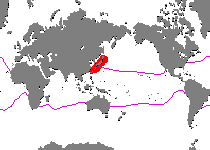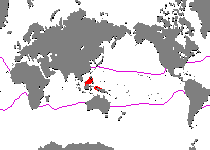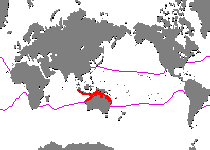
 www.frogfish.ch
www.frogfish.ch

|
Eastern
Atlantic If not from the areas above |
Identification Key Frogfishes
Tropical Indopacific - Frogfishes with long lures
![]()
All frogfish species listed here are living in the Indopacific* and
are not striped.
For striped frogfishes living in the Indopacific*
click here.
For a overwiew of all frogfishes from this area click here.
![]()
These frogfishes are common in the Indopacific* and have a long luring apparatus:
The 3 frogfish species listed below belong to the so called pictus group. They look quite similar and are often confused with each other. More information
Antennarius commerson (Giant frogfish)
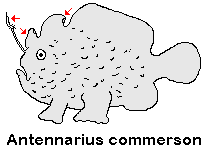 |
Information30cm |
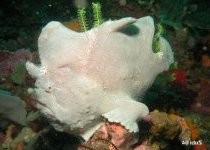 |
|
|
|||
Antennarius maculatus (Warty or Clown frogfish)
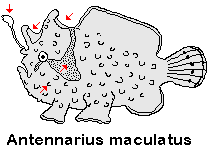 |
Information8-10cm |
 |
|
|
|||
Antennarius pictus (Painted frogfish)
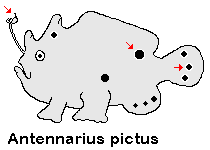 |
Information10-16cm |
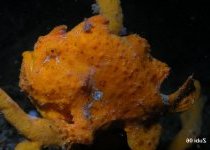 |
|
|
|||
![]()
These frogfishes are uncommon in the Indopacific*:
Antennatus flagellatus (Whip Frogfish) has a very long lure (3.6 times second dorsal spine) - do you have a photo - please write to me.
Antennatus flagellatus (Whip Frogfish)
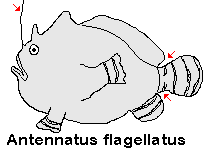 |
Information6cm |
 |
|
|
|||
Abantennarius rosaceus has a long 2nd spine with small bushes.
Abantennarius rosaceus (Rosy frogfish)
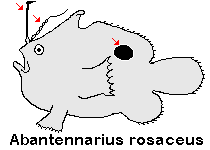 |
Information4cm |
 |
|
|
|||
Antennatus tuberosus shows honeycomb patterns on its skin, its color is yellow, redish and pink and it has a striped tail.
Antennatus tuberosus (Bandfin frogfish)
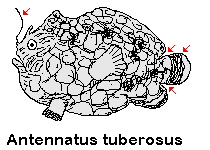 |
Information7cm |
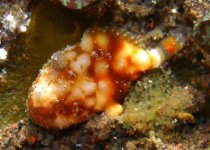 |
|
|
|||
Lophiocharon lithinostomus and Lophiocharon trisignatus differ from other frogfishes by the many ocelli (eye spots) on the tail which seem to be nearly transparent. The two species differ in shape of the lure and esca (Lophiocharon lithinostomus has a long lure with nearly no visible bait, Lophiocharon trisignatus has a large, distinct esca)
Lophiocharon lithinostomus (Marble-Mouthed Frogfish)
 |
Information9cm |
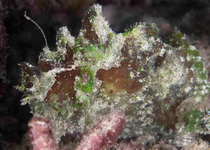 |
|
|
|||
Lophiocharon trisignatus (Three-Spot Frogfish)
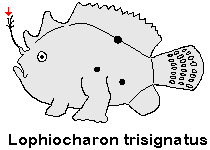 |
Information14cm (18cm?) |
 |
|
|
|||
Tathicarpus butleri has a long rod and transparent membranes between the fins.
Tathicarpus butleri (Butler's Frogfish)
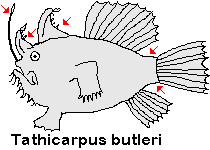 |
Information10-12cm |
 |
|
|
|||
![]()
* On this page are only frogfishes that live in the Indopacific, but not in one of the following geographic areas: Indian Ocean / subtropical Australia / Hawaii / Japan and Taiwan / Eastern Pacific
![]()
This identification key is only for species of the subfamily Antennariinae (frogfishes, family Antennariidae, suborder Antennarioidei) which are frogfishes living in tropical and Subtropical waters.
Please take note, that this is a simplified identification key. Ichthyologists use tables with the number of dorsal, anal and pectoral rays, the length of the illicium and other distinguishing characteristics for means of identification.






